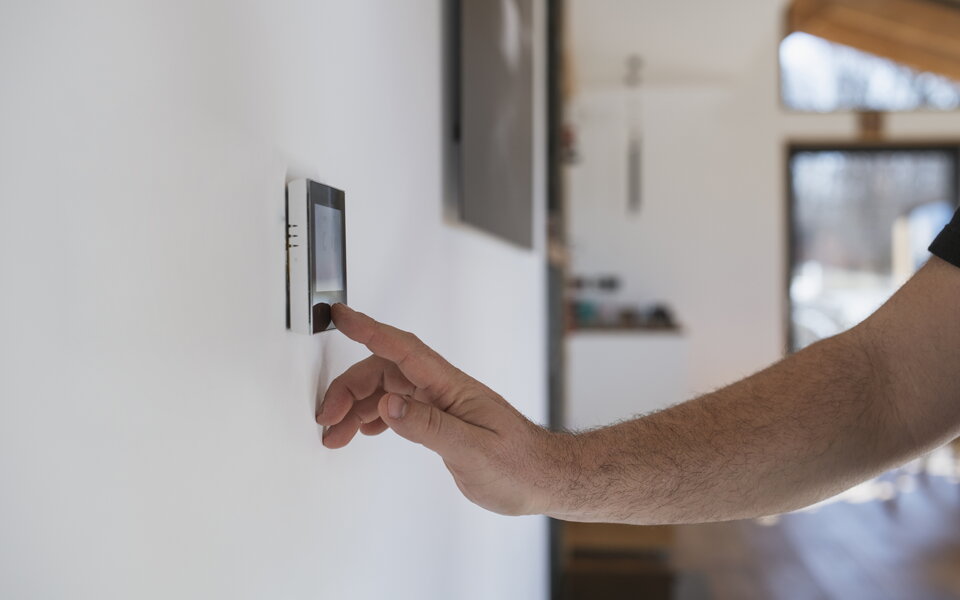Know Your AC’s Efficiency Story
Every air conditioner has a story about efficiency, and the star rating on its label is the unexpected twist. More stars indicate a device that converts electricity into cold air efficiently, lowering bills and footprint over time. When shopping, those ratings and efficiency indicators let you compare models fast. If you currently possess a unit, that label is your shortcut to understanding how it compares.
High-efficiency systems often cost more upfront, but the quieter reward is in long-term savings and gentler environmental impact. Many regions sweeten the deal with rebates or incentives for energy-smart appliances, so it’s worth checking what’s available where you live. If replacing an older unit isn’t in the cards yet, you can still squeeze more performance out of what you have by pairing it with better controls, maintenance, and insulation.
Dial In the Thermostat
A slight temperature change can significantly impact energy utilisation. In summer, set a temperature about 24–26°C and raise it a degree when you’re asleep or away. Each degree lower can increase energy use. Consistency is better for your pocketbook and system than extremes.
Programmable and smart thermostats let you choose a schedule that fits your routine without frequent tweaking. Set mild daytime and nightly setbacks and let occupancy characteristics limit cooling in empty rooms. Remote control from your phone protects you from cooling an empty home if plans change.
Maintenance That Actually Matters
Filters are small parts with outsized impact. When they’re clogged, airflow suffers, coils grow grimy, and the system works harder than it should; swap or clean filters every one to three months, more often if you have pets or dust-heavy environments. Clear debris around outdoor units, keep fins straight, and make sure nothing blocks vents indoors.
A yearly expert service checks refrigerant levels, coils, and electrical components, improving longevity and detecting concerns early. Uneven cooling, short cycling, odd noises, or moisture where it shouldn’t be are signs to call a technician before a small issue becomes a costly one.
Seal, Shade, and Insulate
Cooling involves more than just the unit—it’s about maintaining the desired temperature. Seal windows and doors with weather stripping or caulk to keep cooled air in. Checking the home with a candle or slow hand near frames can discover drafts; fixing them makes your AC breathe better.
Similar to thermal gates, draw blinds or drapes on sun-facing sides during peak heat, use reflecting shades where it’s brightest and open them at night to let cooler air in if outdoor conditions allow. Attic and wall insulation stabilises indoor temperatures and minimises system load, increasing efficiency. Even modest improvements like sealing duct leaks or adding door sweeps add up.
Softer Cooling: Fans, Lighting, and Smart Habits
Air movement changes how warmth feels. Ceiling fans and well-placed window fans create a gentle breeze that makes rooms feel cooler at higher thermostat settings, lowering the required AC work. Just remember fans cool people, not spaces; turn them off when you leave to avoid wasted energy.
Swap heat-heavy incandescent bulbs for LEDs to cut both power draw and unnecessary warmth. Tighten your daily rhythm, too: cook, bake, or run heat-generating appliances earlier in the morning or later at night, and avoid adding extra heat during peak sun hours. Focus cooling where life happens—create a “cooling zone” in the rooms you use most and close doors to less-used spaces. If your utility offers off-peak pricing, align heavy cooling and chores with lower-rate windows for extra savings.
Build Your Home’s Cooling Strategy
Imagine your AC as a leading man. Insulation, seals, blinds, fans, and illumination shape performance. Everything working together provides constant comfort, less temperature spikes, and calm energy. After mapping your home’s hot areas, solar routes, and daily routines, layer solutions: shade, seal, and scheduling adjustments.
If you reside in a hot environment, consider zoning or multi-split systems for targeted cooling. Use colder evenings with night flushing when outdoor air is clean and comfortable, then button things up throughout the day in a mixed environment. The best strategy adapts to weather, occupancy, and time of day to keep your system running smoothly.
Your First Moves This Week
Replace or clean the AC filter, set your thermostat to a summer-friendly range, and program gentle setbacks for sleep and away times. Walk around and seal the obvious leaks, close blinds on sun-facing windows, and shift heat-heavy tasks to off-peak hours.
Take ten minutes to clear leaves and dust around the outdoor unit and make sure vents aren’t blocked by furniture or rugs. If it’s been a year or more, book a service check to keep performance sharp. Add a ceiling fan where you gather most and lock in a habit: fans on only when the room’s in use.
FAQ
What temperature should I set my thermostat in summer?
Aim for 24–26°C for balanced comfort and efficiency, then raise it slightly when you’re asleep or away.
Do fans really help reduce AC energy use?
Yes; the breeze makes rooms feel cooler at higher set points, allowing your AC to work less while maintaining comfort.
How often should I change my air conditioner filter?
Usually every one to three months, more often if you have pets, allergies, or dusty conditions.
Are smart thermostats worth it?
They automate schedules, adjust to occupancy, and offer remote control, often cutting energy use without sacrificing comfort.
What are signs my AC needs professional service?
Watch for uneven cooling, short cycling, odd sounds, higher bills, or moisture around the unit.
Does insulation make a noticeable difference in cooling costs?
Absolutely; good insulation and sealed leaks stabilize indoor temperatures and reduce the workload on your AC.














